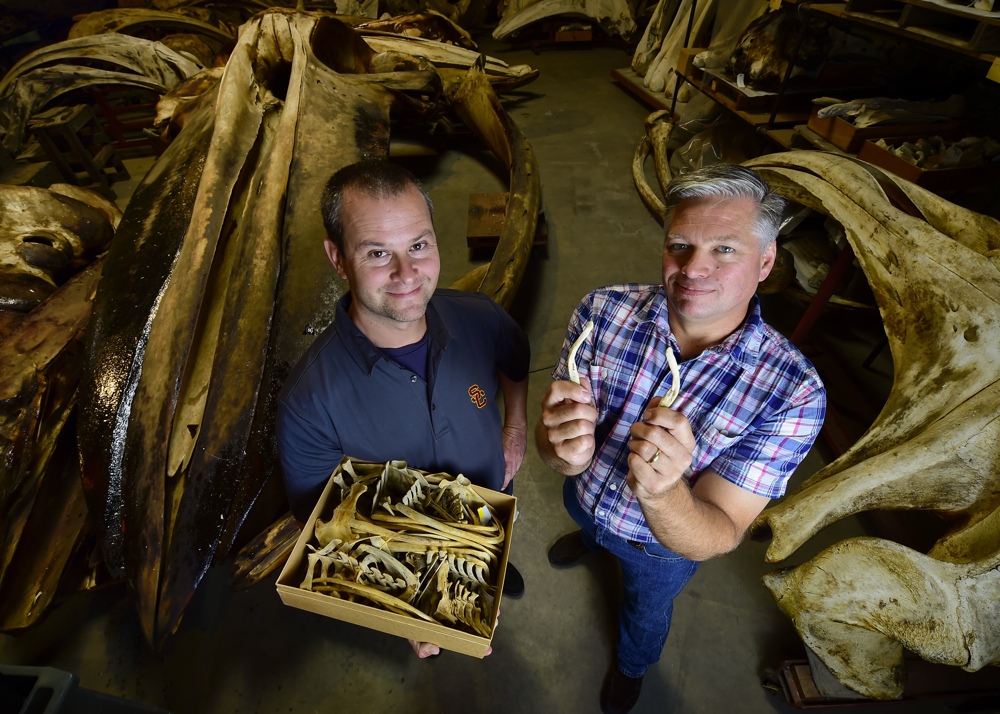Useless? No - Whale Hips Play Sexy Role

Whale hip bones, left over from long-ago days when these cetaceans walked on land, are not useless, vestigial structures as long believed. They're for sex.
Researchers have now found that the size of whale and dolphin hip bones is linked to the size of the animals' penises. The larger the penis, the larger the bones needed to attach muscles for penis control, according to a new study published Sept. 3 in the journal Evolution.
"Everyone's always assumed that if you gave whales and dolphins a few more million years of evolution, the pelvic bones would disappear," study researcher Matthew Dean, an evolutionary biologist at the University of Southern California, said in a statement. "But it appears that's not the case."
Hips don't lie
The ancestors of today's whales and dolphins lived on land, returning to the seas only in the last 50 million years or so, according to the Smithsonian Institution. Although they've traded feet for fins, these animals, known collectively as cetaceans, retain pelvic bones that once anchored hind legs. Biologists have long considered the bones vestigial, a term for an organ or structure that played a role in evolutionary history but no longer has a function. [The Top 10 Useless Limbs (and Other Vestigial Organs)]
Dean and his graduate student, Jim Dines (now collections manager of mammalogy at the Natural History Museum of Los Angeles County) suspected these pelvic bones might not be as useless as they seemed. Cetacean penises are very mobile, and the muscles that control the genitals attach to the pelvic bones, they noted.
The researchers dug through boxes upon boxes of whale and dolphin bones at the Natural History Museum of Los Angeles County and at the Smithsonian Institution, using a laser scanner to make three-dimensional digital models of each pelvic bone they found.
Sign up for the Live Science daily newsletter now
Get the world’s most fascinating discoveries delivered straight to your inbox.
They also collected data about the size of whale testes relative to body mass. Testes size varies by mating style. Animals that mate with multiple partners have larger testes, the better to deliver larger quantities of sperm to outcompete other males.
Not so useless
Controlling for body size, the researchers then compared the size of the whale and dolphin testes to the size of each species' pelvic bones. They found that the larger the testes, relative to body size, the larger the pelvis.
The same correlation did not hold for unrelated rib muscles, suggesting that the finding points to a real function for the pelvic muscles rather than just an overall larger skeleton in better-endowed animals, the researchers reported.
"Our research really changes the way we think about the evolution of whale pelvic bones in particular, but more generally about structures we call 'vestigial,'" Dean said. He pointed to the appendix, a protrusion off the intestines, as an example. Once thought an evolutionary remnant, the appendix actually plays a role in the immune system, acting as a safe haven for gut bacteria that could otherwise be wiped out by diarrhea or gastric infections, researchers reported in 2009.
Follow Stephanie Pappas on Twitter and Google+. Follow us @livescience, Facebook & Google+. Original article on Live Science.

Stephanie Pappas is a contributing writer for Live Science, covering topics ranging from geoscience to archaeology to the human brain and behavior. She was previously a senior writer for Live Science but is now a freelancer based in Denver, Colorado, and regularly contributes to Scientific American and The Monitor, the monthly magazine of the American Psychological Association. Stephanie received a bachelor's degree in psychology from the University of South Carolina and a graduate certificate in science communication from the University of California, Santa Cruz.









